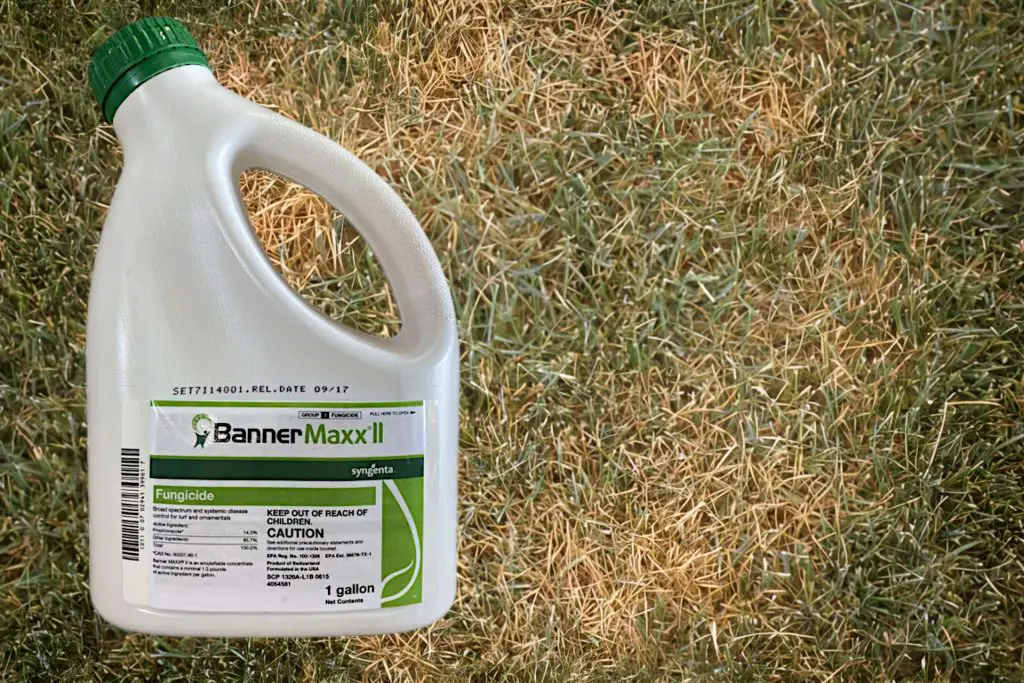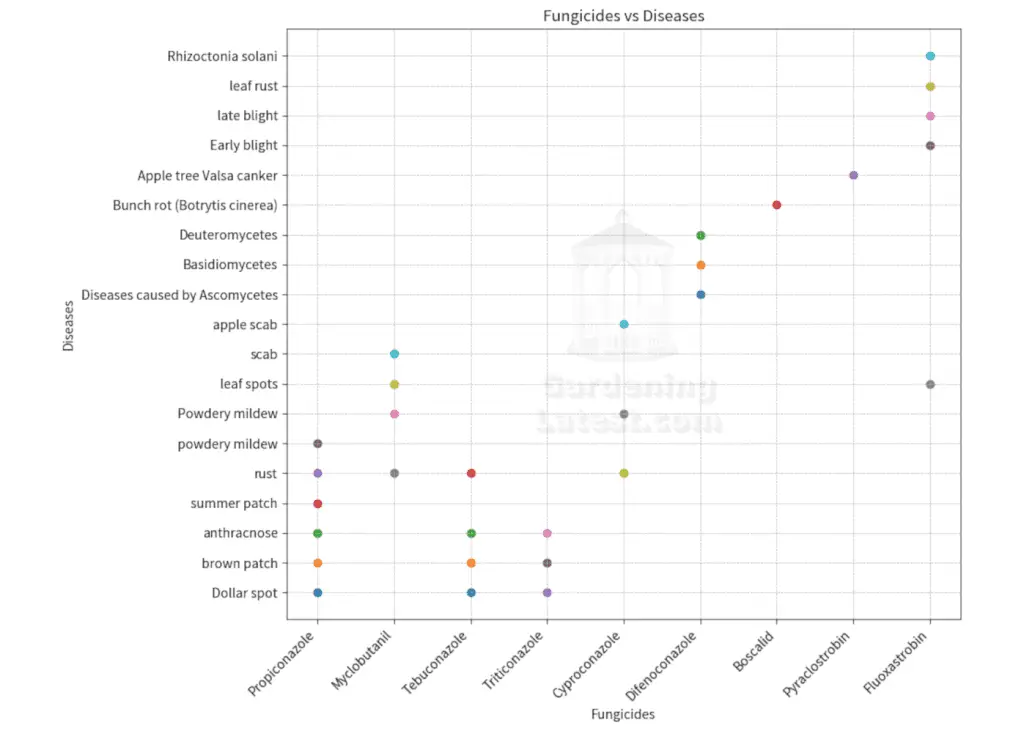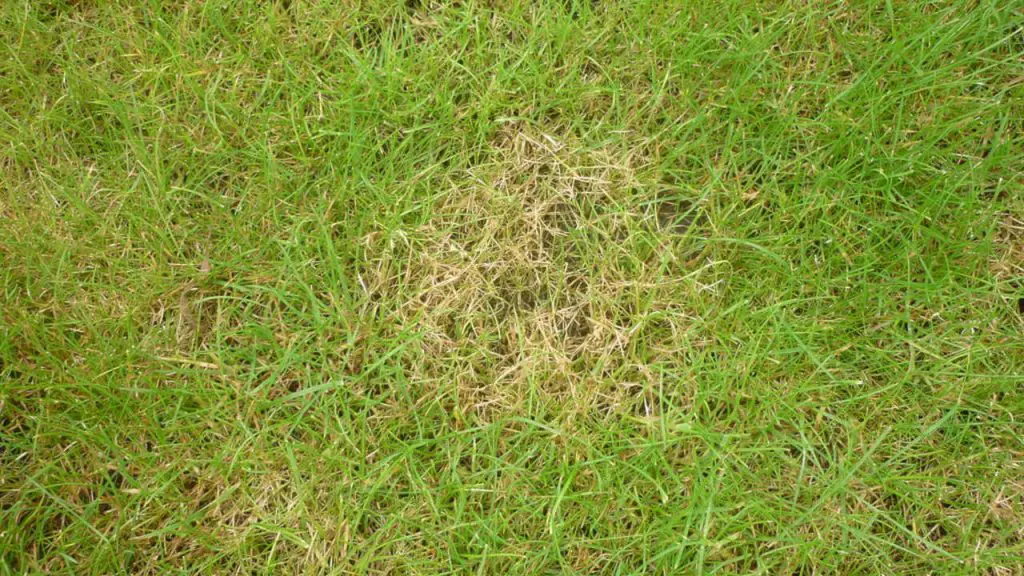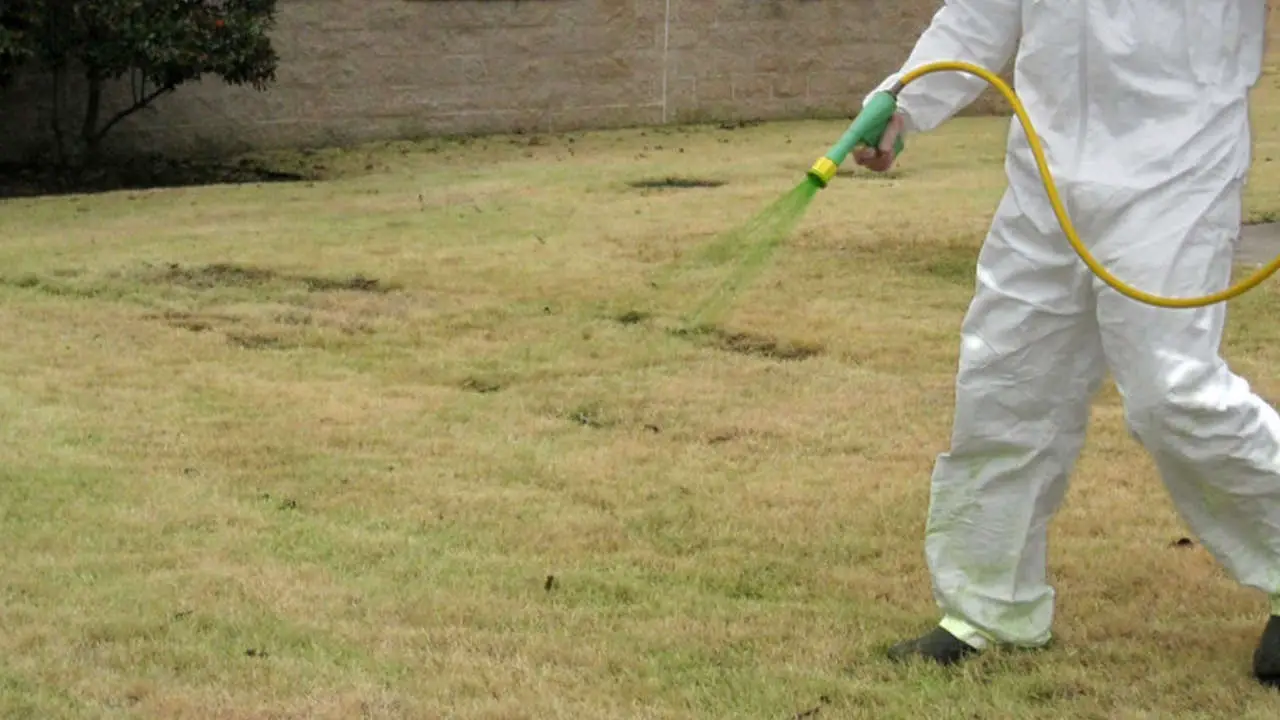Lawn Fungicide | A Comprehensive Guide
- DMIs are a crucial tool in managing various turfgrass diseases and other plant diseases.
- While they are effective, there’s a potential for fungi to develop resistance, emphasizing the importance of rotating or combining fungicides.
- Regular scouting and monitoring are essential to identify the effectiveness of the
Ah, the joy of a lush, green lawn! But even the most dedicated gardener can encounter the challenge of lawn fungus. From golf courses to residential lawns, and from large stadiums with natural turf fields to your backyard, lawn diseases are a common issue. Turf fungicides are crucial to keep your lawn healthy and free of unwanted pathogens.
Understanding the importance of using fungicides is essential in treating lawn disease effectively. With a myriad of lawn fungicides available, choosing the right fungicide can be daunting. This guide aims to be your ultimate resource, shedding light on the path to a healthier lawn.
What Are Lawn Fungicides?

Lawn fungicides are treatments that are applied to a lawn or to eradicate or prevent the growth of grass diseases. These lawn diseases are the result of grass fungi and other microorganisms infecting a lawn or grass area.
Lawn fungicide treatments are applied to eliminate these fungi such as lawn rust and prevent the diseases from affecting the lawn. Lawn fungicide treatments can be part of a comprehensive lawn program or can be used independently to treat a lawn that has been affected by a specific disease.
Fungicide Classes
Every gardener, whether tending to golf courses, residential lawns, or large stadiums with natural turf fields, knows that the secret to a healthy lawn lies in its treatment. Effective fungicides are classified based on their mode of action. Here’s a breakdown of the main classes:
- Ergosterol Biosynthesis Inhibitors (EBIs):
- Function: These inhibit the production of ergosterol, a component of fungal cell membranes. When disrupted, the fungus cannot grow or reproduce.
- Usage: Commonly employed in both lawn care and agriculture.
- Examples: Some of the best lawn fungicides belong to this class.
- Demethylation Inhibitors (DMIs):
- Function: They prevent fungi from producing certain enzymes, hampering their growth.
- Usage: Widely used in lawn fungus treatment.
- Drawbacks: Overuse can lead to resistant fungal strains. Always follow lawn fungicide application guides.
- Succinate Dehydrogenase Inhibitors (SDHIs):
- Function: They interfere with the fungus’s energy production.
- Usage: Popular in treating various lawn fungal diseases.
- Benefits: Effective against a wide range of fungal pathogens.
Additionally, for those diving into lawn fungicide DIY, it’s beneficial to understand other classes. However, always ensure you’re using the right type of fungicide for the specific lawn fungal problem you’re facing.
There are a number of different commercial fungicides available to combat the most common types of lawn diseases that affect various grass types and species.
| Active Ingredient (Class) | Fungicide Class | FRAC Code | Product Name(s) | Diseases Targeted | Mode of Action | Application Method | Resistance Risk |
|---|---|---|---|---|---|---|---|
| Propiconazole | DMI | 3 | Banner MAXX | Dollar spot, brown patch, anthracnose, summer patch, rust, powdery mildew, and more | Inhibits ergosterol synthesis | Foliar spray, systemic | Moderate |
| Myclobutanil | DMI | 3 | Eagle, Systhane | Powdery mildew, rust, leaf spots, scab, and more | Inhibits ergosterol synthesis | Foliar spray, systemic | Moderate |
| Tebuconazole | DMI | 3 | Torque, Mirage | Dollar spot, brown patch, anthracnose, rust, and more | Inhibits ergosterol synthesis | Foliar spray, systemic | Moderate |
| Triticonazole | DMI | 3 | Trinity, Triton | Dollar spot, brown patch, anthracnose, and more | Inhibits ergosterol synthesis | Foliar spray, systemic | Moderate |
| Cyproconazole | DMI | 3 | Alto | Powdery mildew, rust, and apple scab | Inhibits ergosterol synthesis | Foliar spray, systemic | Moderate |
| Difenoconazole | DMI | 3 | Score, Dividend | Diseases caused by Ascomycetes, Basidiomycetes, and Deuteromycetes | Inhibits ergosterol synthesis | Foliar spray or seed treatment | Moderate |
| Boscalid | SDHI | 7 | Emerald | Bunch rot (Botrytis cinerea) in grapevines | Inhibits succinate dehydrogenase enzyme | Not specified | Moderate |
| Pyraclostrobin | Strobilurin | 11 | Insignia, Cabrio | Apple tree Valsa canker | Inhibits mitochondrial respiration | Not specified | Moderate |
| Fluoxastrobin | Strobilurin | 11 | Disarm, Evito | Early blight, late blight, leaf spots, leaf rust, and Rhizoctonia solani | Inhibits mitochondrial respiration | Not specified | Moderate |
The above table provides a comprehensive overview of these fungicides, their classes, targeted diseases, mode of action, application methods, and resistance risks.

How Lawn Fungicides Work?
Fungicides are usually made up of two parts: one that kills the fungus and another that prevents it from growing back. The most common fungicides used in lawn care include copper sulfate, mancozeb, and azoxystrobin.
It is important to note that lawn fungicide does not heal or repair sick grass, but rather offers a curative reaction by inhibiting the development and spread of fungus in the plant.
In order to be effective, liquid fungicides must penetrate into the soil and reach the roots of grasses. Granular fungicides work by clumping together and settling out onto the surface of the ground. These types of fungicides are less likely to penetrate deep enough to treat the root zone of the plant.
It is particularly important to use liquids since they have a wide range of control and may be used to offer preventative, systemic, and curative activities. Because resistance might build over time, it is critical to alternate between various ways of acting. So if using Propiconazole and azoxystrobin applications their use should be rotated.
Categories of Lawn Fungicides
As we have noted, fungicides are often, vital in preventing lawn diseases. They are categorized based on their spectrum of activity. Here’s how they stack up:
Broad Spectrum Fungicides:
- Definition: These tackle a wide range of fungi. Think of them as the multi-taskers in the lawn care world.
- Benefits:
- Versatile and can treat multiple lawn fungal infections at once.
- Ideal for lawn maintenance where the exact fungus type is unknown.
- Examples: Many lawn fungicide brands offer broad-spectrum options, suitable for both golf courses and residential lawns.
Narrow Spectrum Fungicides:
- Definition: Targeted solutions for specific fungal pathogens.
- Benefits:
- Precision treatment for identified lawn fungal diseases.
- Reduced risk of harming beneficial fungi in the soil.
- Usage Scenarios: When dealing with specific lawn fungal problems, using lawn disease identification charts can help pinpoint the culprit.
| Fungicide Category | Ideal For | Common Brands |
|---|---|---|
| Broad Spectrum | Golf courses, general lawn care | Brand A, Brand B |
| Narrow Spectrum | Targeted lawn fungal treatments | Brand X, Brand Y |
Remember, the key to lawn health is not just choosing the right product but understanding its application. How to use fungicide effectively is a combination of knowledge and practice. Whether you’re looking at lawn fungal prevention products or treatments, always prioritize your lawn’s health and safety.
Contact vs. Systemic Fungicides
Contact fungicides like Chlorothalonil and Mancozeb act as a protective shield, annihilating the fungus on contact. They’re your lawn’s first line of defense. On the flip side, systemic fungicides like Propiconazole and Azoxystrobin get absorbed by the plant, providing internal protection.
FRAC Code and Resistance Risk
The Fungicide Resistance Action Committee (FRAC) assigns codes to indicate the risk of resistance. Lower numbers often signify a higher risk. For instance, Azoxystrobin (FRAC 11) has a high resistance risk, while Chlorothalonil (FRAC M5) boasts a low risk.
Timing and Frequency

Your lawn, much like golf courses or the turf in large stadiums, requires timely care. When it comes to lawn fungicides, timing is everything.
- Seasonal Considerations:
- Spring: The season of growth is also a time when fungi become active. Consider preventive lawn fungal disease control methods.
- Summer: With humidity and rain, fungi thrive. Regular check-ups and lawn fungal problem control are crucial.
- Fall: As the temperature drops, some fungi become dormant, but others become active. Stay vigilant.
- Frequency:
- Regular Checks: Incorporate lawn health tips and monitor for signs of lawn fungal infections every two weeks.
- After Heavy Rain: Waterlogged lawns can be breeding grounds for fungi. Consider lawn fungus treatment tips and act promptly.
| Season | Fungal Activity | Recommended Action |
|---|---|---|
| Spring | High | Preventive Measures |
| Summer | Very High | Treatment & Maintenance |
| Fall | Moderate | Monitoring & Control |
Understanding your lawn’s needs and the changing seasons can play a pivotal role in lawn health. But remember, over-treatment can be as detrimental as neglect. Always aim for balance.
Application Methods and Considerations
Whether you’re a seasoned gardener or a novice looking for lawn care tips, knowing how to apply fungicides is as important as choosing the right one. Here’s a primer on the basics:
- Watering:
- Before: Moist soil ensures better absorption. However, avoid applying fungicide to a waterlogged lawn.
- After: Some fungicides require watering-in to activate, while others don’t. Always consult your lawn fungicide application guide.
- Granular vs. Liquid Fungicides:
- Granular:
- Pros: Easy to apply and often long-lasting.
- Cons: Might require watering-in. Not always suitable for immediate lawn fungal treatment.
- Usage: Regular maintenance and preventive measures.
- Liquid:
- Pros: Offers quick action and is absorbed faster.
- Cons: Requires precise measurements and often needs reapplication.
- Usage: When dealing with active lawn fungal problems.
- Granular:
- Best Practices:
- Always wear protective gear.
- Measure the area of your lawn for accurate dosage.
- Store fungicides safely, away from children and pets.
- Consider lawn fungal solution control services if unsure.
| Fungicide Type | Ease of Use | Effectiveness | Best For |
|---|---|---|---|
| Granular | High | Moderate | Maintenance |
| Liquid | Moderate | High | Treatment |
Incorporating these lawn maintenance tips will not only help in lawn fungal infection control but also boost overall lawn health. Always remember, while DIY solutions can be tempting, sometimes professional lawn fungal control services offer expertise and precision that’s hard to match.
Types and Selection of Fungicides
When it comes to combating lawn fungal diseases, not all fungicides are created equal. With countless lawn fungicide brands and formulations available, making an informed choice is paramount for the health of your turf, whether it’s a residential lawn or the expansive green of a golf course.
- Identifying Lawn Diseases:
- Lawn Disease Identification Chart: A must-have tool for any gardener. This chart helps match symptoms to specific lawn fungal infections, guiding you to the appropriate treatment.
- Visual Signs: Discoloration, patches, or unusual growths can indicate fungal activity. Regularly inspect your lawn, especially after rain or extended humid periods.
- Homemade Fungicides:
- Benefits: Often eco-friendly and gentle on the lawn. They can be a good starting point for minor issues or preventive care.
- Recipes: Numerous lawn fungicide DIY recipes are available, often involving everyday ingredients like baking soda or vinegar. Remember, while they can be useful, they might not be potent against severe infections.
- Natural vs. Chemical Fungicides:
- Natural: Derived from organic sources. They’re usually milder and environmentally friendly.
- Chemical: Synthetically produced and often more potent. They can offer quicker results but might be harsher on the environment.
| Type of Fungicide | Pros | Cons | Best For |
|---|---|---|---|
| Natural | Eco-friendly, Gentle | Might require repeated application | Preventive care, Mild infections |
| Chemical | Potent, Quick action | Environmental concerns | Severe infections, Quick relief |
Remember, always read lawn fungicide reviews before making a purchase. It’s also wise to test a small patch of your lawn before a full-scale application.
Safety and Precautions

A lush green lawn is a joy to behold, but ensuring it’s safe for everyone is crucial. While lawn fungicides play a pivotal role in maintaining the beauty of golf courses, stadiums, and homes, they come with their set of precautions.
- For Pets: While many fungicides are formulated to be safe once dried, it’s advisable to keep pets off the treated area until it’s completely dry. Always check labels for specific warnings related to lawn fungicide safety.
- Over-application: More isn’t always better. Over-applying can lead to:
- Resistant fungal strains.
- Harm beneficial microorganisms in the soil.
- Potential lawn burn or damage.
- Combining Treatments:
- Fungicide and Insecticide: While it might seem efficient, applying both simultaneously can lead to unforeseen reactions or diminished effectiveness. It’s generally best to space out applications.
- Storage:
- Store in a cool, dry place.
- Keep out of reach of children.
- Ensure containers are sealed to prevent spillage or evaporation.
| Safety Measure | Why It’s Important | Tips |
|---|---|---|
| Pet Safety | Prevent ingestion or contact with chemicals | Restrict access until the product dries |
| Correct Dosage | Avoid resistance and lawn damage | Measure lawn area, read the label |
| Safe Storage | Prevent accidents and maintain product efficacy | Label containers, store away from direct sunlight |
Your lawn is a living ecosystem. While lawn fungicide effectiveness is a top priority, it should never come at the cost of safety. Whether you’re opting for professional lawn fungus control services or going the DIY route, always prioritize the well-being of every living thing that enjoys your lawn.
General Knowledge and Benefits
Maintaining a pristine lawn isn’t just about aesthetics. A healthy lawn contributes to the environment and offers numerous benefits to homeowners and communities. Dive into the world of lawn care and discover the myriad advantages of using fungicides.
- Benefits of Regular Fungicide Treatment:
- Enhanced Lawn Health: Regular treatments prevent the onslaught of lawn fungal diseases, ensuring your turf remains lush and vibrant.
- Increased Property Value: A well-maintained lawn can boost the appeal and value of your property.
- Environmentally Friendly: Healthy lawns absorb more carbon dioxide, and by preventing diseases, you reduce the need for chemical interventions.
- Key Ingredients: Always familiarize yourself with the active ingredients in your chosen fungicide. Whether it’s for lawn fungus control or lawn fungal disease prevention, understanding the components can help in effective application and safety.
- Recognizing Lawn Needs: Just as every plant has unique needs, so does every lawn. Be observant of:
- Soil Type: Different soils have varied fungal susceptibilities.
- Climate: Some lawn fungal problems are more prevalent in specific climatic conditions.
- Lawn History: Past fungal issues can offer clues to future prevention.
| Aspect | Tip | Related LSI Keyword |
|---|---|---|
| Soil Type | Check pH levels | lawn health tips |
| Climate | Monitor humidity levels | lawn fungal problem prevention |
| Lawn History | Maintain a lawn diary | lawn fungal solution control |
Arming yourself with knowledge is the first step towards impeccable lawn maintenance. Whether it’s a sprawling golf course or a cozy residential patch, understanding the nuances of lawn fungicides can make a world of difference in your green endeavors.
Final Thoughts
When dealing with lawn care problems such as lawn fungus, understanding the intricacies of lawn fungicides can make a huge difference. This includes the fact that employing the right cultural control methods to prevent wand disease should always be a priority1. However whether you are caring for the greens of golf courses to our cherished residential lawns, the battle against lawn fungal infections is ongoing. But with the right knowledge, tools, and approach, it’s a battle you can confidently face.
Whether you’re navigating the maze of lawn fungicide brands or crafting your own lawn fungicide DIY solution, remember the core principles: safety, accuracy, and regular monitoring. Employ lawn fungus prevention tips and stay proactive. Your lawn, after all, is a reflection of your dedication and care.
If you are uncertain always turn to a reliable lawn care expert and consider professional lawn fungal control services. With a combination of expert advice and hands-on practice, a lush, disease-free lawn is well within reach.
Videos
Resources
- Colorado State University: Nonchemical Disease Control
